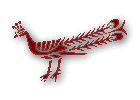 |
|
| ISSN 1084-7553 | |
| IJTS Vol. 1, No. 1 August 1995 |
|
| Editorial Note | |
| The Unique Position... | |
| 1. The Concept of... | |
| 2. The Spanda and... | |
| 3. Conclusion... | |
| Computer Space | |
| News | |
| Letters | |
| Support The IJTS |
|
|
|
|
| Search |
|
| Register |
|
| Create Your Profile | |
| Recover Password | |
| Log In |
|
| Institutional Sub |
|
| none | |
Among the Others of the Trika System of Kazmir
| by Enrica Garzilli |
|
2. The Spanda and the Trika Schools. This doctrine of spanda was, on the one hand, absorbed into the Zivaite non-dualistic tradition expressed by the lineage of the masters SomAnanda38- Utpaladeva- LakSmanagupta-Abhinavagupta- KSemarAja (9-12th Cent. A.C.)39. They wrote commentaries on Agama-s40 and original works. On the other hand, the spanda gave birth to a separate school, even if this school was never categorized as such by the Zivaite teachers, by Indian historians of Indian philosophy such as MAdhava (XIV Cent. A.C.) who explained in his famous SarvadarzanasaMgraha the sixteen main philosophical systems of his time, or the SarvasiddhAntasArasaMgraha, attributed to ZaGkara. However, the concept of spanda as dynamism of consciousness is present in the monistic Tantra-s or Agama-s possibly written in KazmIr. They are the MAlinIvijyayottaratantra or PUrvazAstra (considered by Abhinavagupta as the most authorative Tantra and commented on by him); the MRtyuGjaya or Netratantra, later commented on by KSemarAja (Netrodyota); the Rudrayamalatantra with its famous VijGAnabhairava, commented on by KSemarAja (VijGAnabhairavodyota); the ParAtrimzikA, twice commented on by Abhinavagupta (ParAtriMzikAlaghuvRtti and ParAtriMzikAvivaraNa); the Svacchandatantra, commented on by KSemarAja (Svacchandodyota). Another work expressing the spanda principle is the Parazambhu-mahimnA-stava, attributed to the sage DurvAsas who, as we read in the HarivaMzaPurANa, taught KRSNa himself the monistic Tantra-s. According to tradition DurvAsas lived at the end of the Kaliyuga. Ziva, out of compassion for the human beings, appeared in his dreams and ordered him to teach the right faith. Then the sage created, through the power of his own mind, three sons. Through them and through a daughter of one of these, the Zivaite teachings were spread. [This is a preview of the full page; if you are a member of the Asiatica Association and have access to the IJTS, please login using the box on the left menu; non members: please become a member to support the Asiatica Association, and get full access to our publications.] |
|
©1995-2006 Asiatica Association. All Rights Reserved
site development L. Magnocavallo / site comments E. Garzilli |